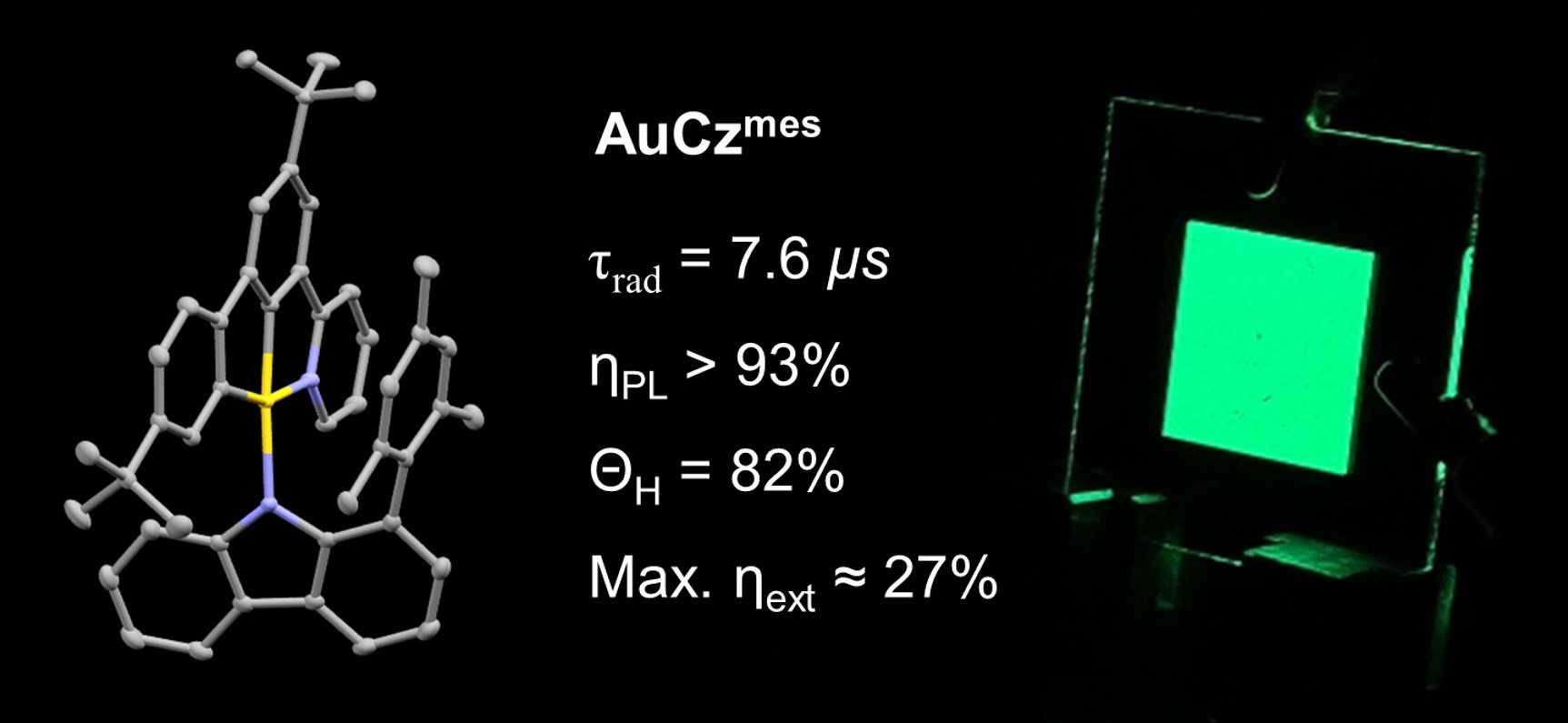[Adv. Opt. Mater.] Design and Synthesis of Asymmetric Au(III) Complexes Exhibiting Bright Anisotropic Emission for High-Performance Organic Light-Emitting Diodes
We synthesized new asymmetric Au(III) organometallic OLED molecules demonstrating record-breaking effciencies.

Organic light-emitting diodes (OLEDs) are emerging as one of the most promising candidates for next-generation optoelectronics. However, most commercial OLED displays are fabricated using organometallic phosphors containing rare transition metals, such as Ir(III) and Pt(II). Recently, the development of efficient phosphorescent emitters based on abundant Au(III) is drawing considerable attention. Here, rational molecular design of a series of Au(III) organometallic complexes consisting of asymmetric C^C^N ligands and carbazole moieties functionalized by phenyl or mesityl groups is presented. The synthesized complexes exhibit shortened radiative lifetimes, and reach improved photoluminescence quantum yield, ηPL, of greater than 93% in thin films. Moreover, the asymmetric molecular design induces anisotropic emission with a high ratio of horizontally oriented transition dipole moment of up to 82% in host-guest films. Accordingly, high-performance OLED devices with record-high external quantum efficiencies, ηext, and current efficiencies, ηCE, of up to 27% and 89 cd A−1, respectively, are demonstrated. It is believed that the molecular design of anisotropic Au(III) emitters will be greatly facilitated by the fundamental principles and theoretical analysis presented here.
